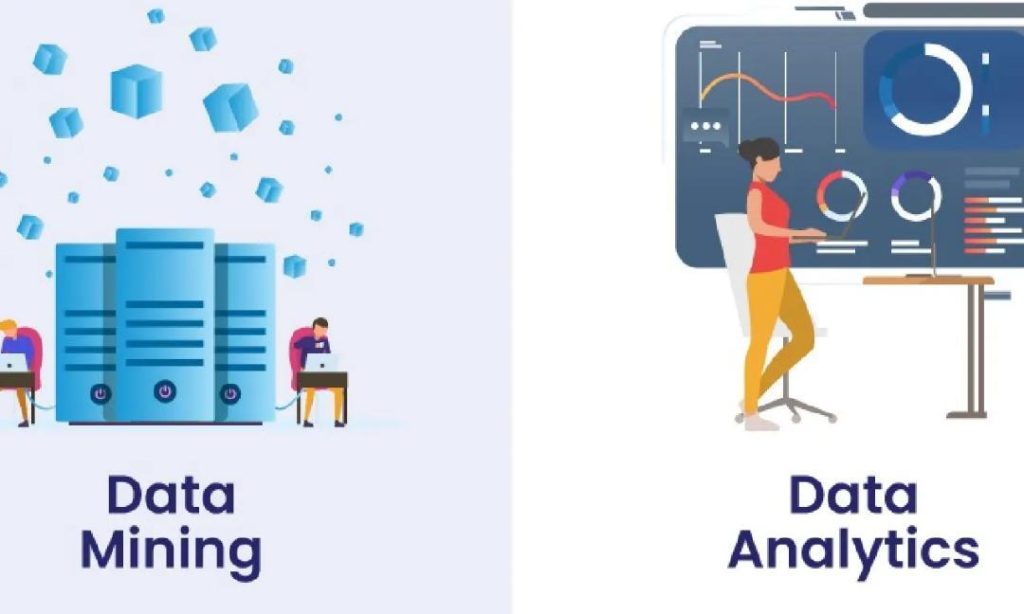
What’s the Real Difference Between Data Mining and Analytics?
In the world of data, it’s easy to get caught up in the buzzwords and jargon that seem to be thrown around with reckless abandon. Two terms that often get lumped together are data mining and data analytics. But are they really interchangeable? The answer is no – while they may seem similar, data mining and data analytics are distinct processes with different goals and methodologies.
Data Mining: The Discovery Process
Data mining, also known as knowledge discovery in databases (KDD), is the process of automatically discovering patterns and relationships in large datasets. It involves using various techniques such as clustering, decision trees, and neural networks to uncover hidden insights that may not be immediately apparent. Data mining is often used to identify anomalies, detect changes, and predict future trends.
In data mining, the focus is on the discovery process itself, rather than the specific insights or outcomes that result from that process. The goal is to uncover new and interesting patterns that can inform business decisions, improve operations, or uncover new opportunities.
Data Analytics: The Insight-to-Action Process
Data analytics, on the other hand, is the process of extracting insights from data to inform business decisions. It involves using statistical and mathematical techniques to analyze and interpret data, and to draw conclusions that can be used to drive action.
Data analytics is often used to answer specific questions, test hypotheses, and validate assumptions. It’s a more structured and methodical approach than data mining, and is often used to measure the effectiveness of a particular strategy or initiative.
The Key Differences
So what are the key differences between data mining and data analytics?
- Goals: Data mining is focused on discovery, while data analytics is focused on insight-to-action.
- Methods: Data mining uses a variety of techniques to uncover patterns and relationships, while data analytics uses statistical and mathematical techniques to analyze and interpret data.
- Scope: Data mining is often used to analyze large, complex datasets, while data analytics is often used to focus on specific questions or hypotheses.
- Output: Data mining typically produces a list of potential insights or patterns, while data analytics produces a specific answer or conclusion.
The Importance of Both
So why do organizations need both data mining and data analytics? The answer is that they complement each other perfectly. Data mining provides the raw material for data analytics, and data analytics turns that material into actionable insights.
Without data mining, organizations would be limited to analyzing only the data that is easily accessible or visible. Data mining allows them to uncover hidden patterns and relationships that might not be apparent otherwise.
Without data analytics, organizations would have difficulty turning the insights uncovered by data mining into actionable decisions. Data analytics provides the framework for analyzing and interpreting data, and for drawing conclusions that can inform business decisions.
Blending Data Mining and Analytics
In reality, successful data programs blend both data mining and data analytics. Data mining is used to uncover new and interesting patterns, and data analytics is used to analyze and interpret those patterns to inform business decisions.
For example, a retailer might use data mining to identify patterns of customer behavior, and then use data analytics to analyze those patterns and identify opportunities to improve customer retention or increase sales.
Conclusion
In conclusion, data mining and data analytics are two distinct processes that are often confused with each other. Data mining is the process of automatically discovering patterns and relationships in large datasets, while data analytics is the process of extracting insights from data to inform business decisions.
While they may seem similar, they are complementary processes that work together to uncover insights and drive action. By understanding the differences between data mining and data analytics, organizations can build more effective data programs that drive real business value.
Source: https://www.growthjockey.com/blogs/data-mining-vs-data-analytics






